The Tanning of Wood: The Experiments
When an alder tree gets cut, there occurs an reaction. After few hours it turns bright orange:
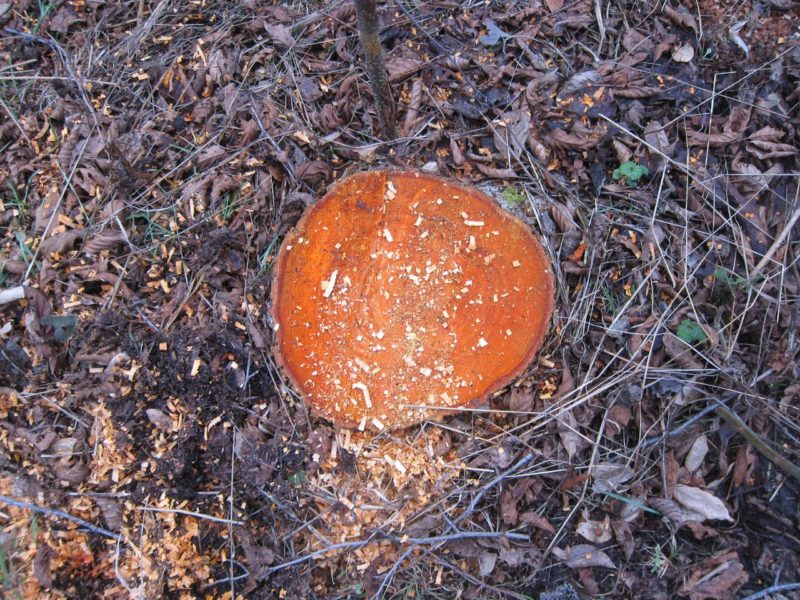
Unfortunately this color fades away soon. But what capacity lies in the alder wood to turn brown permanently? What is the influence of alkaline or sour medium? What different shades are possible?
First I boil one wooden dolphin during a week on my stove. The second one I add some vinegar:
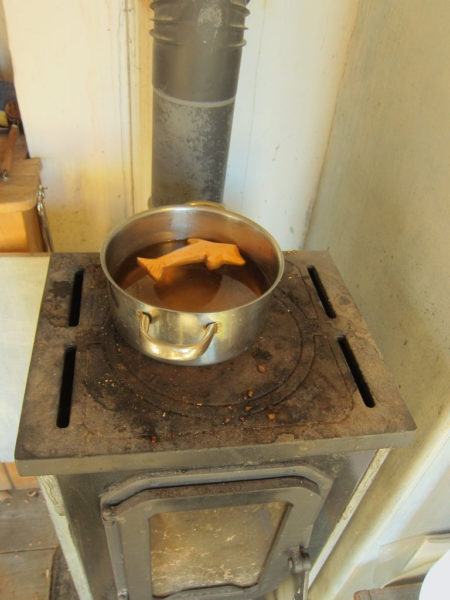
I will show you the results in my next post.
Next I give a dolphin into the rainwater barrel, where it dives under the ice.
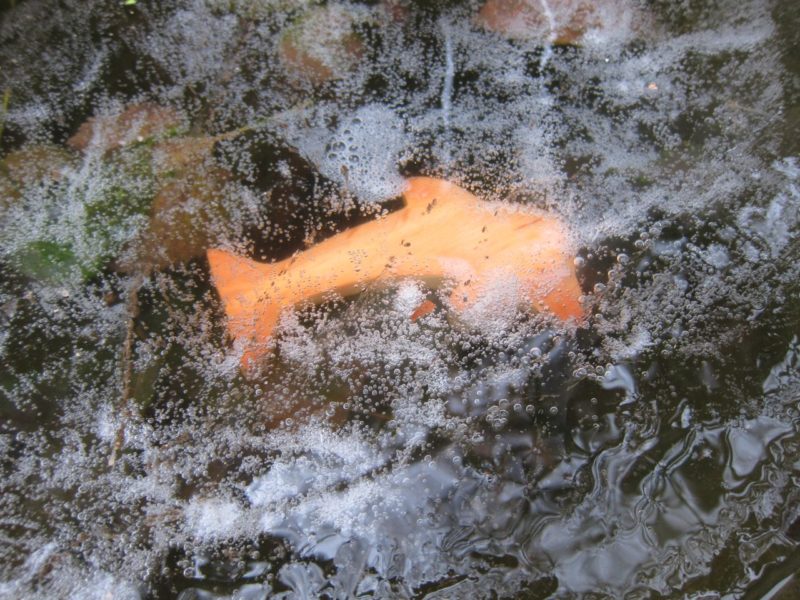
The forth dolphin goes swimming for three weeks into the river, attached to a little rock: The river next to our home contains limestone.
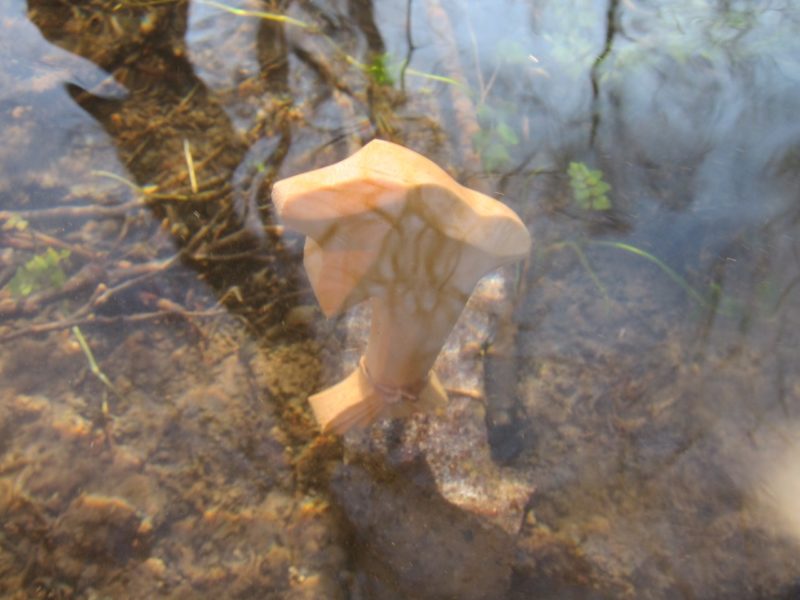
Another old method of tanning wood is to use vinegar soaked on rusty nails (which I have in abundance):
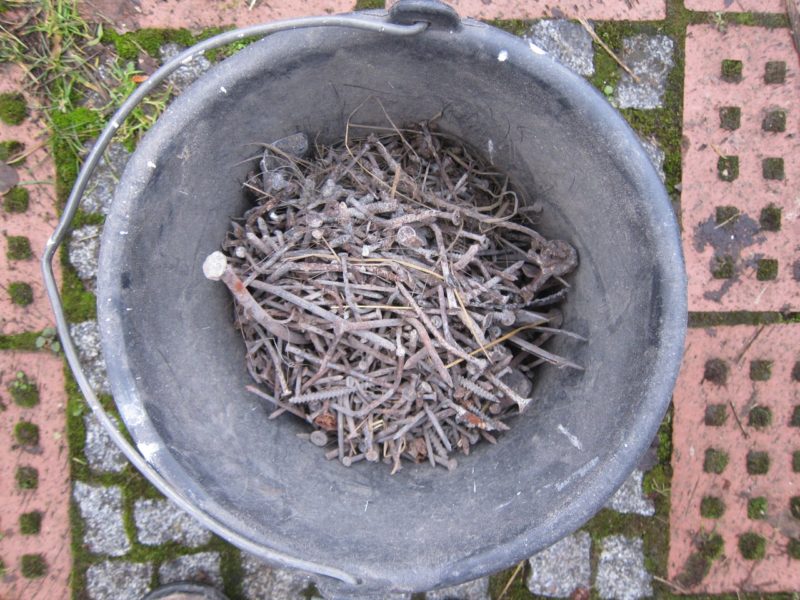
The liquid stays light but as soon as it gets contact to wood, the wood turns dark brown, almost black… (see results)
Another traditional way of browning wood is to have it exposed to the vapor of ammonia. It happened in old cowsheds by accident, but was later copied using salammoniak. So I went directly to our goat shed.
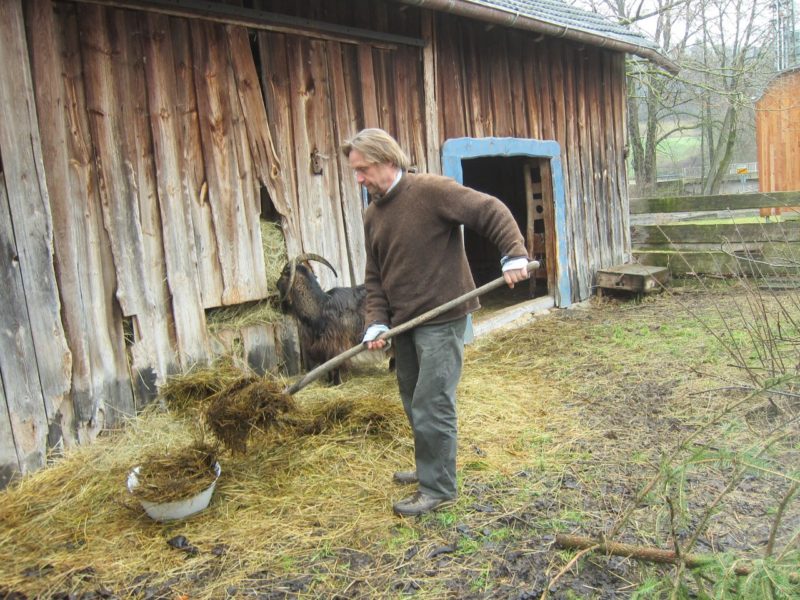
The dolphin is placed on top of the dung with a piece of oak wood to compare. An airtight bucket is turned over it.
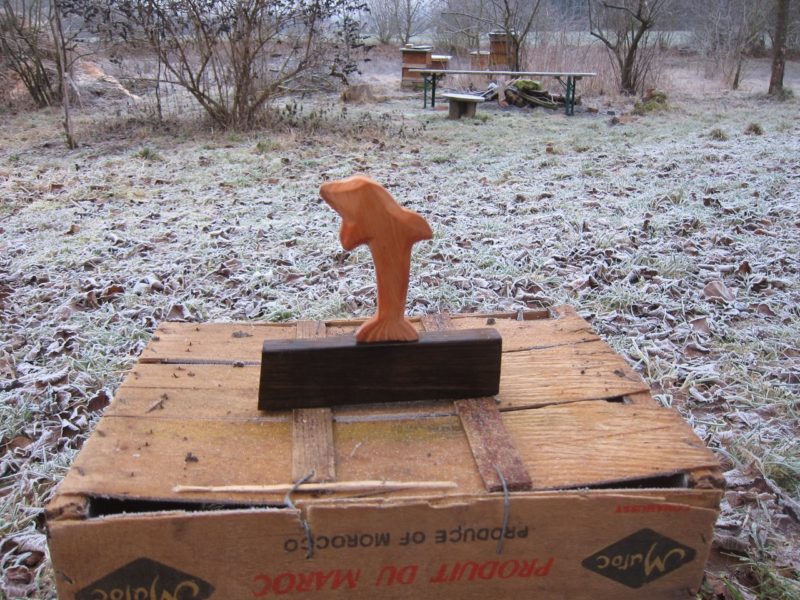
Three weeks later the oak turned black but the dolphin is unchanged. Apparently what is missing is the tannic acid, responsible for the process. The bark of a broken oak branch nearby will do the job:
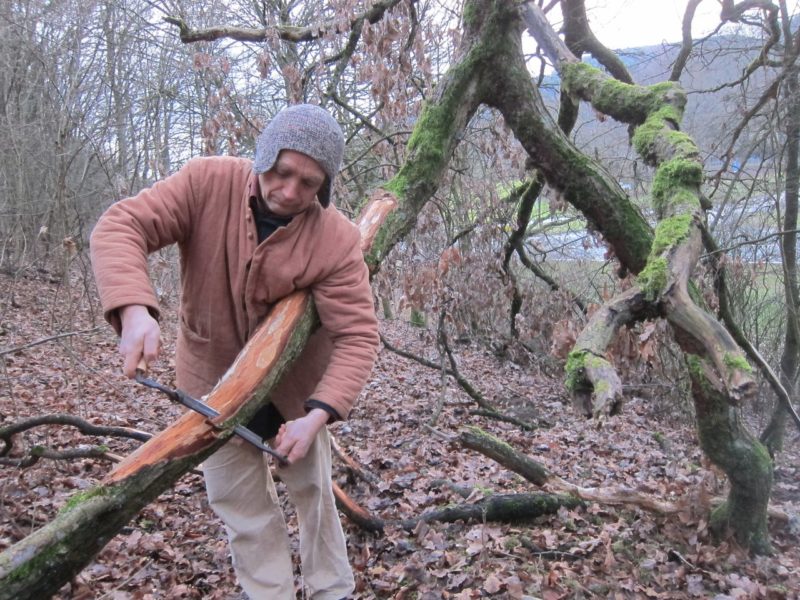
T o get a faster result than with the dung, I use 25% ammonia solution. The result is breathtaking. Literally because you better don’t take in the fumes of this acid. And figuratively, because the dolphin turns to a beautiful warm and dark brown. See my next article.